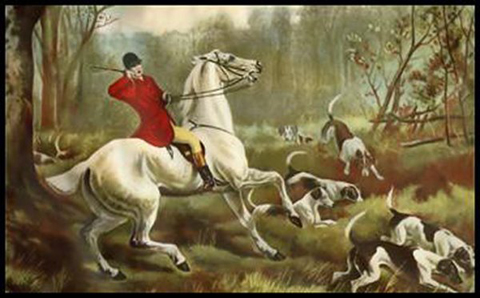
Comments welcomed!
From the Glenshee Equestrain website.
My instructors in the past have told me to weight the outside seat/stirrup through a turn, so understanding and applying the theory behind weighting the inside was a bit of a stretch on my part, as it seems contradictory to the aim of keeping the horse balanced; after all, horses always want to fall in on a turn, so weighting the inside should make the problem worse, right? Not necessarily.
Most horses, particularly young or developing horses, will tend to continually decrease the size of the circle (or turn) if the rider does not intervene. They tend to fall into the circle by falling through the inside shoulder and propping themselves up on the inside hind which is used a bit like a crutch toward the inside of the circle. To counteract this tendency, all of the other aids applied in turning are designed to enlarge the circle and bring the inside legs underneath the horse instead of allowing them to be used as “crutches” inside the circle.
So, the idea of weighting the outside seems like a logical solution, which would rebalance the horse to the outside, lighten the inside shoulder and quarter and allow the legs to come under the body. It’s not a bad assumption and, if the goal is just keeping the horse to the outside of the bend, it works.
The only issue that arises, to my mind, is that the role of the outside legs in propelling the horse forward around the bend will be compromised by loading the balance in that direction. While bent, the outside legs must reach further forward and around the body to keep up with the track made by the inside legs, while the inside legs flex more under the body and have a shorter distance to travel. In other words, in bending, the inside of the horse collects while the outside lengthens.
By weighting the outside, the horse will have to shift its balance outward and support that weight by engaging the legs under the point of balance (“collection”) and this will limit the swing of the legs forward and compromise the ability of the outside hind to push the body forward through the turn, which would in turn shorten the stride and disengage the inside hind. Basically, loading the outside (and especially the outside shoulder) allows the horse to evade the proper loading of the inside hind through the turn. It will instead “collect” the outside and allow the inside to “lengthen,” which is an awkward way to make a turn and will disrupt the gait, the balance and possibly cause tension. Worse, it will require unnatural positioning and strong rein aids to maintain the bend and keep the horse on the curved line.
So, even though the inside weight aid might, in theory, encourage the horse to move slightly into the circle, the predominant effect would be to increase engagement of the inside hind, which in turn actually helps the horse stay on the circle and resist falling in. Then the rider’s leg or rein aids (more on those in posts to follow) would serve to enlarge the circle or push the horse out into the turn as needed, while allowing the outside legs to swing freely and propel the horse forward. To put it very simply, you generally want to sit toward the side (or quarter) that has to shorten and bear more of the weight, while freeing up the side that needs to reach or push more.
That’s how I interpret the concept anyway. But, I don’t know if there is a way to prove or disprove any of this. It’s all theoretical, and I guess the best way to determine which theory to follow is just to experiment with both and see what works best. My barn has become a kind of riding laboratory where I can experiment with different philosophies and techniques, and I love to try out all of these theories and test their effectiveness. I’ve seen and felt the benefits of weighting the inside seat through a basic circle or turn firsthand. But, I’d also be interested to hear about other riders’ experiences with weighting the inside vs. the outside in normal turns and circles.
